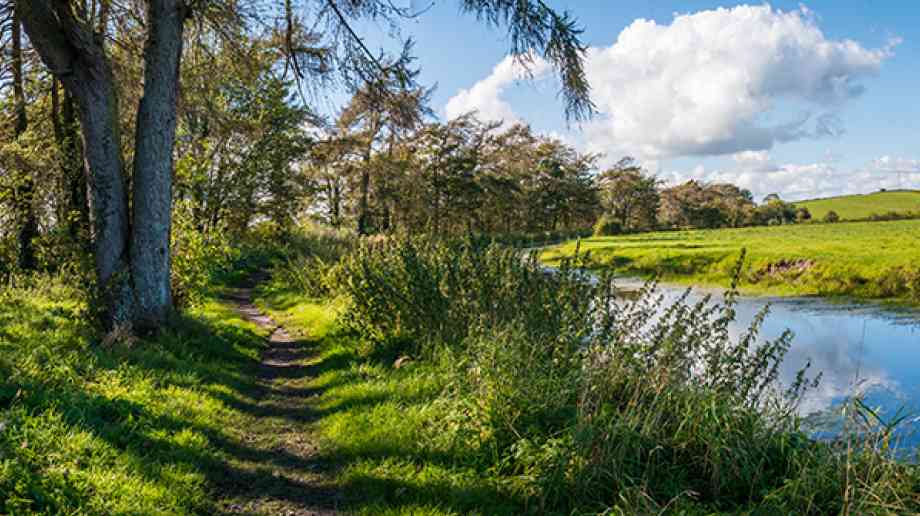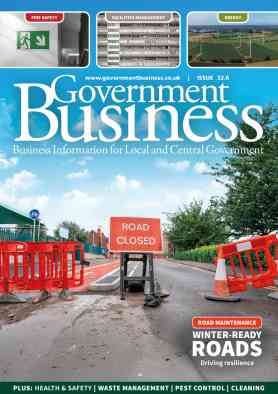
Rediscovering and restoring our waterways
Ali Morse, water policy manager at The Wildlife Trusts explains some of the Trusts’ projects and how they are benefitting the local area
Every day, whether we’re conscious of it or not, our daily lives are shaped by water. The most obvious example is the simple action of turning on the taps at home to wash up, brush our teeth or fill the kettle. Outside the home we’ll likely be near a river, stream, lake, reservoir, canal or wetland. Spanned, damned or diverted, the waterways we see can often be heavily engineered, constrained or sometimes hidden underground. Waterways are constantly in flux, impacted over time by natural and human factors whether by tides, rainfall, abstraction, drought, sewage systems, trading routes, flood defences, development or agricultural to list a few. Water and waterways connect us directly to nature and have shaped the way we live over millennia.
Our ‘blue spaces’ are also places to spend time in nature – there is growing evidence that even amongst other natural features, they have distinct benefits¹ for our mental health.
Today waterways and the wildlife that inhabits them are adversely affected by a multitude of challenges including agricultural pollution, sewage, over-abstraction and by the historic changes made to rivers’ natural course all of which are exacerbated by climate change. It’s little wonder that they are in a critical state, with all of England’s waters, for example, failing pollution targets, and less than a fifth meeting ecological standards.
Aims
One of The Wildlife Trusts’ aims is to restore vital habitats and bring wildlife back across land, fresh waterways and sea. Our vision is of a thriving natural world with natural habitats playing a key role in addressing the ecological and climate emergencies. Across the 46 Trusts there are a host of new nature recovery projects this year and of these, a number involve river and wetland restoration. These schemes not only restore nature, but also incorporate nature-based solutions – ways of working with nature to provide benefits to people and wildlife. By relying more on natural processes and less on heavy engineering interventions, we can harness the power of nature to capture flood waters, filter it more slowly, break down pollutants, and later allow that water to dissipate more slowly and replenish water resources for society. The Wildlife Trusts’ projects embrace these concepts, restoring the function, form and diversity of water and wetland habitats.
River restoration
Berkshire, Buckinghamshire & Oxfordshire Wildlife Trust (BBOWT) is forging the way on a major wetland and river restoration project at their flagship Chimney Meadows reserve beside the Thames. Creating a new freshwater channel for fish and restoring wetland habitat, under a £2m RDPE Water Environment Grant, the project has involved landscape re-modelling to reconnect the river with the floodplain, helping fish to move around, improving habitats and water quality, and tackle the impacts of climate change by reducing flooding downstream. Floodplains hold a huge amount of carbon and levels are being monitored on site. Work continues this year to restore lost habitats, benefitting wildlife including otters, water voles, chub, snipe and hobbies.
BBOWT work on the Ecover-funded Meadows for the Climate project will study the ability of floodplains to store carbon to mitigate climate change. In spring 2023, soil testing starts at Chimney Meadows with the aim of gathering enough evidence over the three-year project to discover whether floodplain meadows are a more effective, reliable and longer-term natural carbon store than other habitats. Partnering with the Open University Floodplain Meadows Partnership and the Thames Valley Wildflower Meadow Restoration Project, the project team will also restore floodplain meadow alongside The Thames.
Community
Birmingham and Black Country Wildlife Trust’s Love Your River Stour initiative is a community-focused river restoration project which has been in operation since 2021 at key sites across Wolverhampton, Stourbridge and Halesowen (thanks to funding from the Green Recovery Challenge Fund). The project tackles issues affecting the river and its wildlife including barriers to fish migration, pollution and litter. Following additional funding from the West Midlands Combined Authority’s Community Green Grants programme, the Trust is able to expand its urban river restoration project into Lye in Dudley and Cradley Heath in Sandwell. This second phase of the Love Your River Stour project will focus on two key sites enabling continued river restoration across the wider river catchment area and working with new communities. One of the plan’s key aims is for everybody living in the West Midlands to have access to high quality natural areas within a 300-metre walk of their home. Local communities will be able to get involved with the project through practical conservation volunteer days.
Gowy Meadows is one of Cheshire Wildlife Trust’s largest reserves and is at the heart of its Gowy & Mersey Washlands Living Landscape. Covering over 400 acres (165ha), the reserve includes a significant proportion of the floodplain grazing marsh found in Cheshire including ponds, hedgerows, wet grassland and an extensive network of wildlife rich ditches, now a stronghold for water voles. The site is a haven for birds with over 158 species recorded, including regular sightings of great white egret, garganey, lapwing, marsh harrier, merlin, wheatear and stonechat. The reserve is particularly impressive for aquatic invertebrates including the lesser silver water beetle and is home to more than half of the dragonfly and butterfly species recorded across Cheshire. The Trust’s Nature Recovery team have recently secured funding to deliver enhancements to the wetland habitats across the reserve which will see the installation of new sluices, scrapes and bunds to help to manage water levels on the site to provide ideal conditions for waders and waterfowl.
Sheffield & Rotherham Wildlife Trust is pioneering natural solutions along the Limb Brook in south Yorkshire. Encompassing water quality, flooding and land management, this two-pronged approach aims to ensure nature-based solutions are included in local elements of the emerging Environmental Land Management Scheme. The Trust’s Working with Water team is on the ground carrying out natural flood management projects and using this work to bench test high level research along the Limb Brook on ecosystem services and economics in partnership with industry leaders.
Warwickshire Wildlife Trust has secured additional funding to deliver a £3million project in the Sherbourne Valley in Coventry. The project will focus on the River Sherbourne, its tributaries, the green spaces along its length and the wider catchment area of the river in and around Coventry. The total scheme area is 60 square kilometres and is a sub-catchment of the wider Warwickshire Avon river catchment, which is one of a number of river catchments that form the River Severn Basin. The River Sherbourne starts its life outside the city boundary in Corley Moor and flows through some of the more affluent, and also some of the most disadvantaged communities in Coventry. The team will help people in Coventry to feel connected to the river Sherbourne and their surrounding green spaces, ensuring a greater variety of wildlife and habitats, and will communicate with local people and schools to empower them to protect their heritage.
Projects like these exemplify why restoring our waters and wetlands improves water quality, protects water supplies, reduces flood risk, locks away carbon, improves biodiversity and supports nature’s recovery whilst enhancing the places we love to visit. They bring partners together to take joint action and harness the expertise and determination of local landowners and communities. They show what we can do, in collaboration with other organisations, to turn around the fate of our waters despite all the pressures they face. And above all they demonstrate that it’s not too late to take action to restore our vital blue spaces, and to continue to champion all the benefits that this brings. Wherever clean water is located life, can really flourish.


